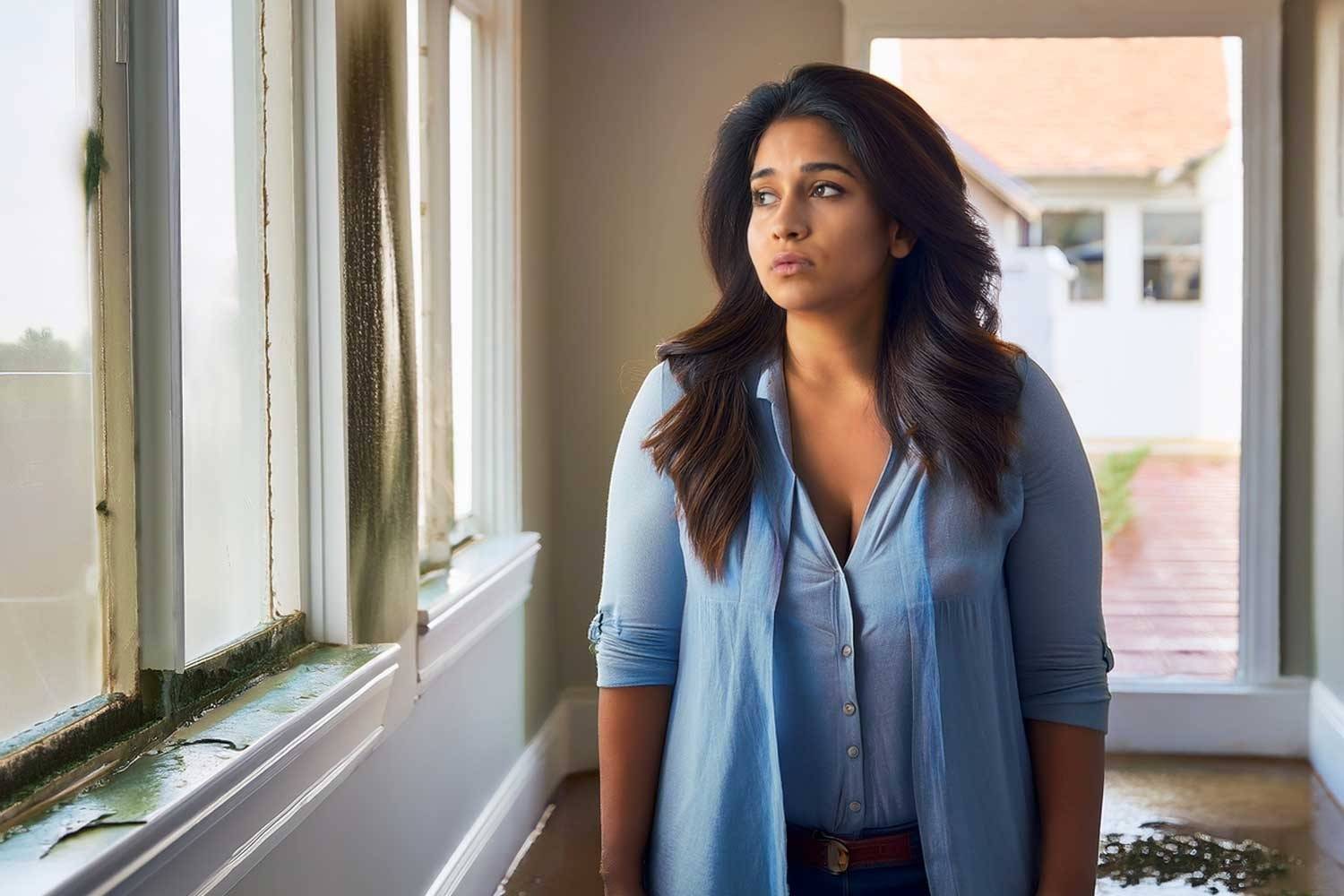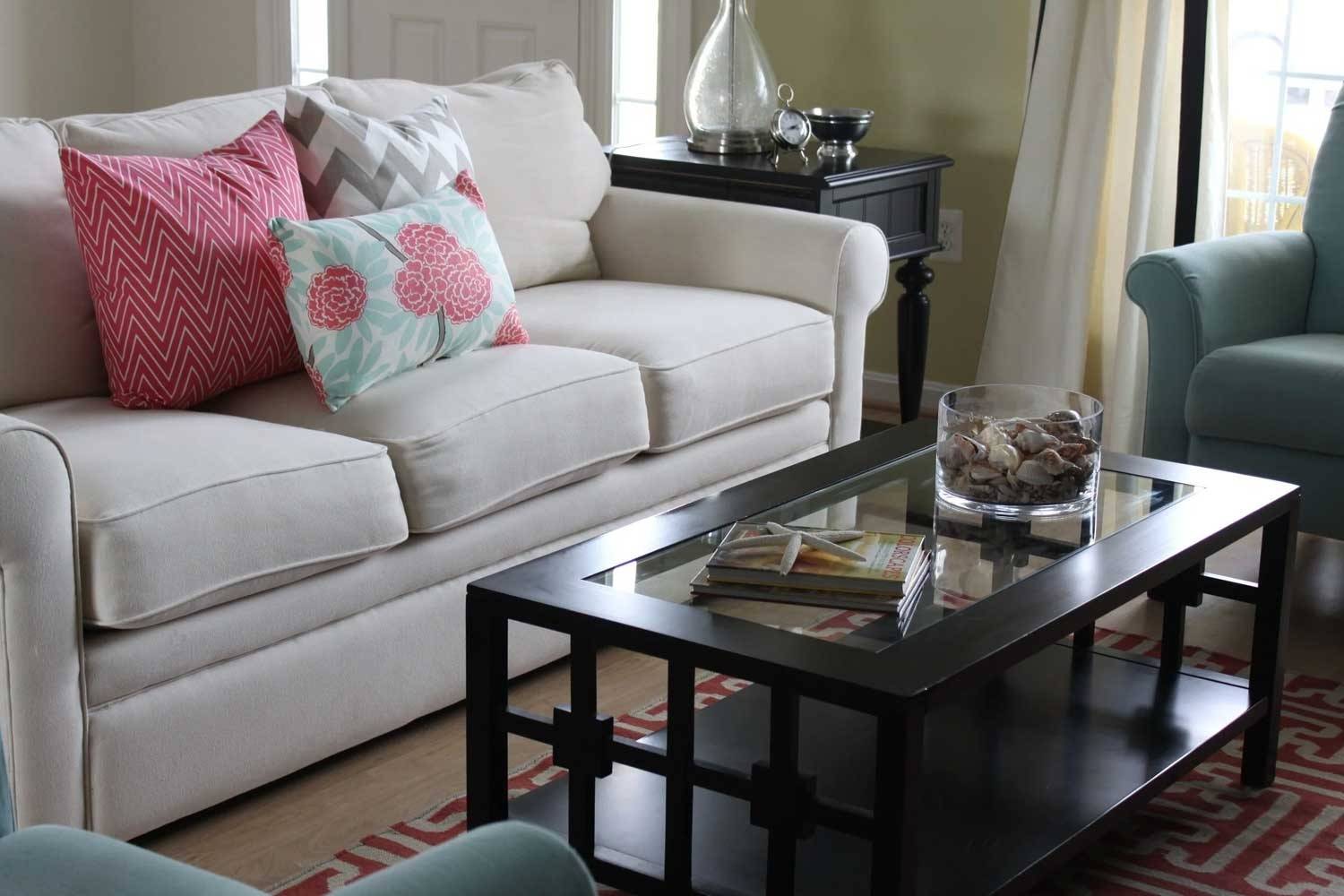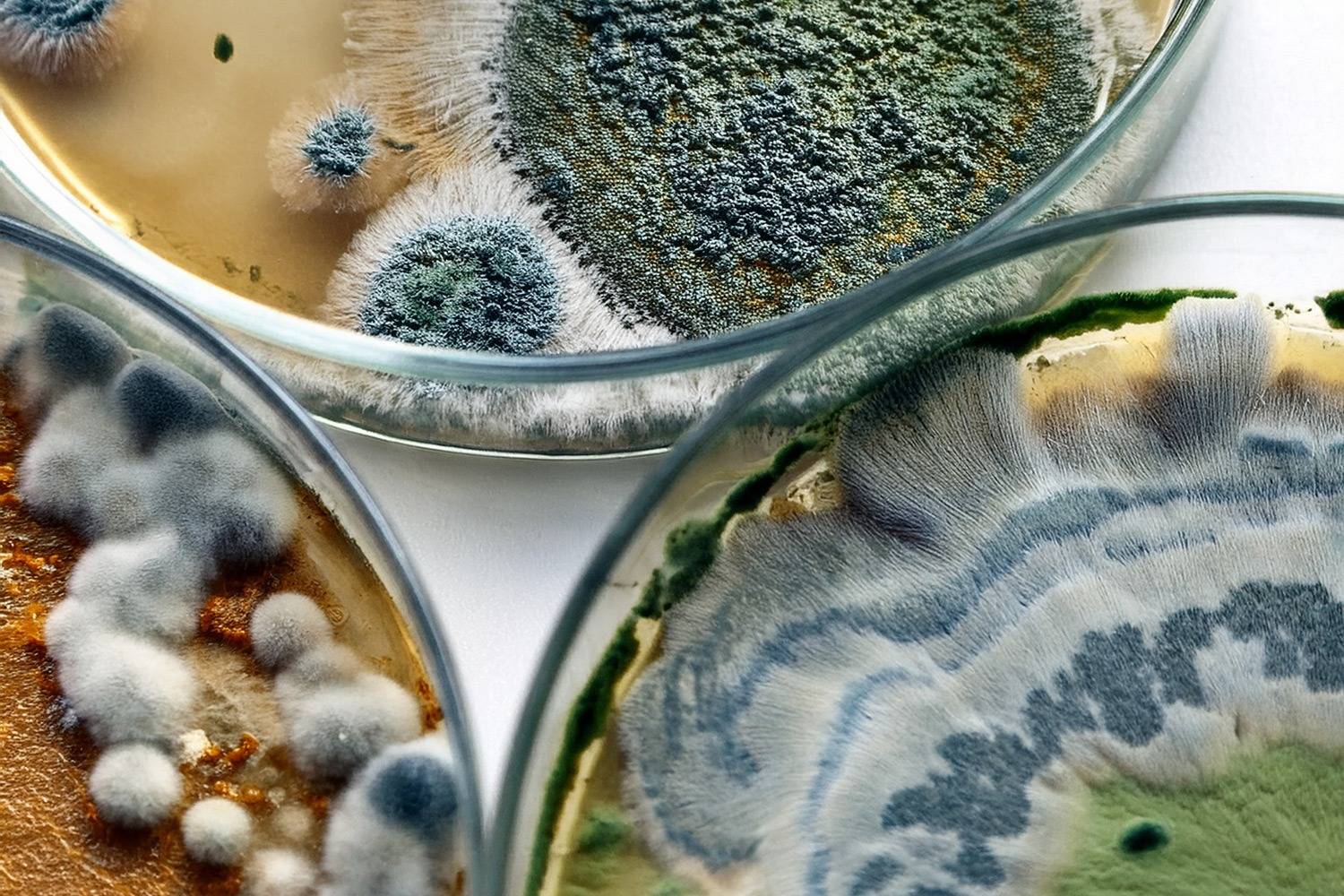Mold can be one of many thousands of species of fungi that if given the right conditions can wreak havoc on your home and if left untreated, lead to serious health problems. Whether it's a mild case on the bathroom tile or a serious infestation in the basement, finding mold can be a big deal and should be removed ASAP. So, how should you get rid of a bad case of mold?
First generation do-it-yourselfers claim strong disinfectants such as chlorine bleach or ammonia should be used to kill the mold while today's authorities say the better solution is to remove it altogether. With an overwhelming amount of information swirling around, it can be tough choosing which products to use to not only to get rid of the mold but also keep it from coming back. The one thing we do know for sure is that using the wrong product can make a mold issue much worse and since learning the hard way is no fun, we're here to help you out. First, let's take a look at how mold operates and why when it comes to getting rid of it, the pros are right; the removal method is always best.
Mold: neither plant nor animal.
Mold is unique in that scientifically, it's in a category of its own being neither plant nor animal. Mold spores can be found virtually everywhere, indoors and out, always searching for a suitable environment to grow. If favorable conditions are found, the spores will latch on and spread its roots into the material to begin the digestion process. When mold is visible, you are only viewing the portion of the mold colony that has broken through the surface. Mold roots as deep as it can into organic materials to ensure a consistent food source and continued survival. It only needs a warm, moist environment along with this food source to survive. Since mold thrives inside the materials it feeds on, it it only makes sense to remove it to discontinue the growth cycle.
Most of the cleaners under our kitchen sink are labeled "all-purpose cleaners" or "anti-bacterial" which may work for dirt, bacteria or other common cleaning tasks, but not for mold. Mold is stubborn and isn't your regular dirt and grime so an out-of-the-ordinary solution is required to get rid of it. Mold should always be removed or pulled out of the surface, not just sprayed with a cleaner and wiped away. This is why an oxygenated cleaner has proven to be the most effective.

Even dead mold can still trigger allergies.

What is an oxygen bleach?
An oxygen based cleaner can come in either powder or liquid and basically uses oxygen to clean, instead of harsh chemicals. It's color-safe and non-toxic qualities make it a favorite among professionals because it can deliver the same "bleachy" clean look without the problematic side effects of other toxic cleaners. An oxygenated cleaner is typically sodium percarbonate based which gives it the additional disinfecting power of hydrogen peroxide when active. When applied, the oxygen bleach uses oxygen bubbles to break the bond between the mold and the material then pulls the mold up and out. This process is essential because even dead mold spores remain allergenic to humans. An oxygen bleach is a safe and proven method for not only disinfection but is imperative for reducing mold exposure to your family and discouraging new growth.
Another major plus for an oxygen bleach is it's ability to neutralize offensive odors. Anyone dealing with a mold issue knows the tell-tale musty odor mold produces. If you are already dealing with a smelly issue, the last thing you want to do is add another pungent chemical odor! Our oxygen bleach formulation, UltraMean2, was designed to not only eliminate the bad odor but to leave behind a mild, refreshing scent. This is a must for families with small children or trying to avoid unnecessary chemical exposure.
A few common household cleaners have proven effective in cleaning minor cases of mold and mildew. For instance, vinegar, baking soda and liquid dish detergent are a great non-toxic choice for small jobs on hard non-porous surfaces. These are less effective against a serious case of mold but good to keep in mind for a quick cleanup.
The Clorox® Company, OSHA and the EPA have determined that chlorine bleach SHOULD NOT be used for mold remediation.
Just as important as what you should use, is knowing what not to use.
Let's go over a few...
A widely perpetuated myth is that chlorine bleach will can tackle any dirty job but when it comes to mold, it might just be the worst advice. Chlorine bleach (Sodium Hypochlorite) is great at disinfecting (killing the good and the bad) and discoloring a surface. It is an extremely caustic substance that will change the color of virtually anything it touches, including mold. This is extremely deceiving because it can give the applicator a false sense of remedy when all it really did was discolor the surface mold leaving internal roots untouched.
Additionally, chlorine bleach cannot soak in a porous material (where mold hides) and therefore, its disinfecting properties are vastly limited to surfaces such as glass or tile. The most troublesome factor when using bleach is that it is mostly comprised of water- 96% to be exact. The chlorine inside the bleach evaporates quickly after application leaving behind water that seeps into the porous materials that actually feeds the internal mold! This is why we commonly see mold grow back with a vengeance in the same spot a week or later. Using the bleach method will only leave you with a never ending cycle bleaching and a much bigger problem than you started with.
Ammonia or azane is a compound of nitrogen and hydrogen with the formula NH₃. In liquid form it is commonly called ammonium hydroxide. It is usually colorless but far from odorless. Like its acidic counterpart, ammonia cannot penetrate a porous surface but can be used to disinfect a hard non-porous surface. Again, this may clean the surface mold, but can not reach the underlying root of the problem.
Additionally, just like bleach, it discolors and leaves the mold remaining on the surface. Dead mold and its spores are still allergenic to humans so the mold still needs to be removed from the home to decrease exposure.
Health note: Both of these products are extremely toxic to humans and should never be mixed together under any circumstances.
Check your label! You'll be shocked to learn how many products labeled "mold & mildew" cleaners are plain old bleach or ammonia! Learn to read the label on your cleaning products and know what to look for. Chlorine bleach is typically labelled Sodium Hypochlorite and ammonia in liquid form is ammonium hydroxide. Not only are you paying big money for a cheap fix but now you know these "MOLD KILLERS" simply do not work for mold removal. When choosing the right cleaner for a tough job, education and research is important. We strongly encourage you to do your research, after all, this is your home and potentially your family's health. The proper mold removal plan will save you time, money and a world of hurt in the future.




